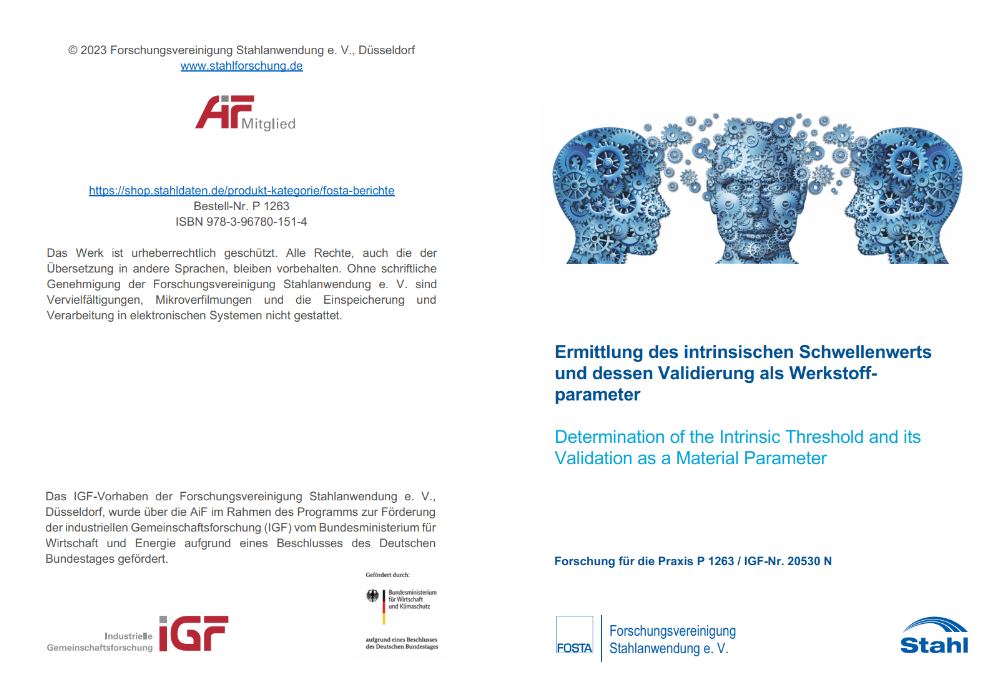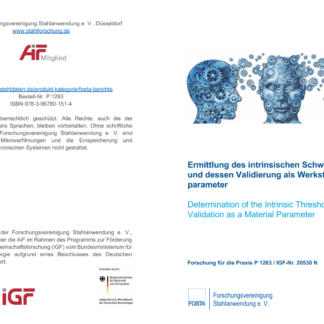Description
P 1263 – Determination of the Intrinsic Threshold and ist Validation as a Material Parameter
The application of fracture mechanics methods for damage-tolerant component design is state of the art for cyclic loads in the range of the Paris-line. However, relevant from a practical viewpoint are often lower loads in the threshold range of the d𝑎/d𝑁-Δ𝐾-curve. Due to the large influence of crack closure effects, the determination thereof is very time-consuming and also error-prone. It is expedient to base the design on effective – i.e. crack closure corrected – crack propagation data. An important material parameter is also the intrinsic threshold, below which no crack propagation is possible.
In this research project, the influence of various test methods and environmental conditions on the determination of the threshold against fatigue crack propagation Δ𝐾th was investigated. Statistically validated recommendations for the experimental determination of the intrinsic threshold value Δ𝐾th,eff were derived. This serves as input parameter of an further elaborated procedure for component design based on effective crack propagation data, determined at a load ratio of 𝑅 ≈ 0.8.
Thresholds determined at a load ratio of 𝑅 ≈ 0.8 in laboratory air at higher test frequencies (≥90 Hz) were found to be conservative estimates of the intrinsic threshold. At load ratios 𝑅 ≪ 0.8, sometimes a strong influence of extrinsic effects on the crack propagation behavior was found. An examination of the fracture surfaces revealed oxide films of thicknesses in the order of several hundred nanometers. When the testing frequency was reduced to ≈55 Hz and the testing was performed in moist air (60 % r.F. and 80 % r.F.), crack closure was also observed at 𝑅 = 0.8. However, the procedure for component design based on effective crack propagation data always provided conservative results within a tolerable error range and is therefore suitable for application.
The knowledge gained in the project contributes to a robust component design based on fracture mechanics methods. The greatly reduced testing effort when using effective crack propagation data as compared to the determination of stress ratio-dependent crack propagation curves considerabely accelerates and simplifies component design based on fracture mechanics methods.
All research reports in german language only!
Published in:
January 2023
Authors:
Prof. Dr.-Ing. Matthias Oechsner, Dr.-Ing. Marcus Klein, Josef Arthur Schönherr, M.Sc., Prof. Dr.-Ing. Uwe Zerbst, Dr. Mauro Madia, Larissa Duarte, Dipl.-Ing.


